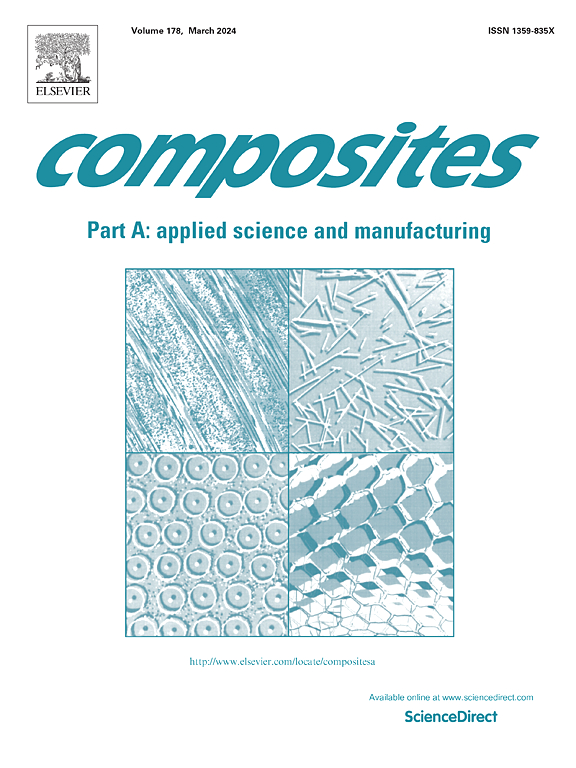通过自动纤维铺放实现热塑性复合材料带原位固结过程中的横向挤压流
IF 8.1
2区 材料科学
Q1 ENGINEERING, MANUFACTURING
Composites Part A: Applied Science and Manufacturing
Pub Date : 2024-10-11
DOI:10.1016/j.compositesa.2024.108519
引用次数: 0
摘要
热塑性复合材料带在自动纤维铺放过程中的横向挤压是控制相邻带间隙/重叠的一项挑战。理论模型可以帮助我们深入了解工艺参数对胶带变形的直接影响。本研究开发的模型采用幂律粘度评估了原位固结过程中界面处三种不同的无滑移、完全滑移和不完全滑移边界条件下熔融带的非牛顿挤压流,旨在以最小的计算成本预测带的最终宽度。通过有限元分析验证了模型预测的结果,结果非常吻合。随后,无滑移和完全滑移假设分别低估和高估了固结宽度的实验测量值。然而,不完全滑移条件下的挤压模型可以有效捕捉实验数据的趋势。该模型包括挤压过程中亲密接触发展对摩擦参数的影响,利用了一个新的非牛顿梯形凸面模型。本文章由计算机程序翻译,如有差异,请以英文原文为准。
Transverse squeeze flow of thermoplastic composite tape during in-situ consolidation via automated fiber placement
Transverse squeezing of thermoplastic composite tapes during automated fiber placement is a challenge in controlling gaps/overlaps of adjacent bands. A theoretical model may provide insights on direct effect of process parameters on deformation of tape. The developed models in this work evaluate non-Newtonian squeeze flow of molten tape using power-law viscosity under three different no slip, perfect slip, and imperfect slip boundary conditions at interface during in-situ consolidation, aiming to predict the final width of tape with minimal computational costs. The results predicted by models are verified using finite element analysis with close agreement. Subsequently, no slip and perfect slip assumptions underestimated and overestimated the experimental measurements of consolidated widths, respectively. However, the squeeze model with imperfect slip condition may effectively capture the trends in the experimental data. This model includes the effect of intimate contact development on the friction parameter during squeezing, utilizing a new non-Newtonian trapezoidal asperity model.
求助全文
通过发布文献求助,成功后即可免费获取论文全文。
去求助
来源期刊

Composites Part A: Applied Science and Manufacturing
工程技术-材料科学:复合
CiteScore
15.20
自引率
5.70%
发文量
492
审稿时长
30 days
期刊介绍:
Composites Part A: Applied Science and Manufacturing is a comprehensive journal that publishes original research papers, review articles, case studies, short communications, and letters covering various aspects of composite materials science and technology. This includes fibrous and particulate reinforcements in polymeric, metallic, and ceramic matrices, as well as 'natural' composites like wood and biological materials. The journal addresses topics such as properties, design, and manufacture of reinforcing fibers and particles, novel architectures and concepts, multifunctional composites, advancements in fabrication and processing, manufacturing science, process modeling, experimental mechanics, microstructural characterization, interfaces, prediction and measurement of mechanical, physical, and chemical behavior, and performance in service. Additionally, articles on economic and commercial aspects, design, and case studies are welcomed. All submissions undergo rigorous peer review to ensure they contribute significantly and innovatively, maintaining high standards for content and presentation. The editorial team aims to expedite the review process for prompt publication.
 求助内容:
求助内容: 应助结果提醒方式:
应助结果提醒方式:


